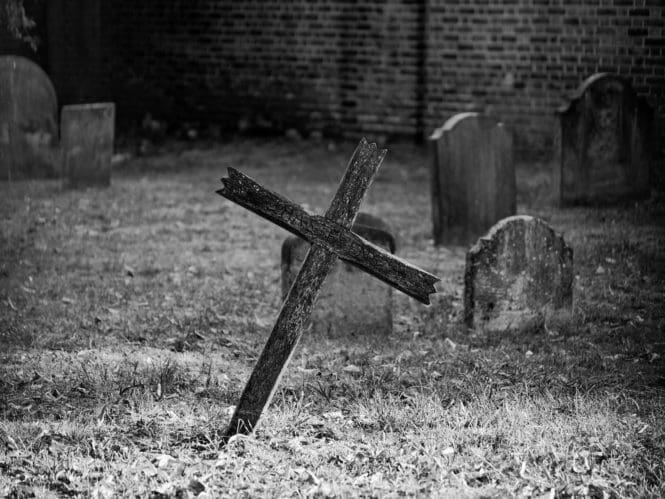Ed: The news below comes as no surprise to us, given the ongoing issues with integrity and clergy discipline in Episcopal Church, as well as lack of accountability and lack of urgency.
We cannot overstate the importance of the Episcopal Church cleaning up its act.
Source: Anglican Ink, by Canon Robert Lewis.
In my eighteen years of parish ministry, I have had a bit of an eye roll every time new statistics come out. Don’t get me wrong, I think we all need markers of measurement to see what our church is doing well, and where we need to improve. I was not ready to receive the last set of numbers that I received from my bishop. At the House of Bishops meeting in March, the bishops gathered received some truly telling statistics that I will unpack and propose what I think we need to consider to address the issues:
First, what does Sunday look like in the Episcopal Church right now? The last decade has been rather disastrous. In 2014, our in person average Sunday attendance (ASA) was 604,938. A decade later, the latest statistics place it at 398,887. Over a third (34%) of those regularly worshipping with us ten years ago were lost to death, indifference, or simply got out of the “church habit’ during the COVID-era lockdowns.
Those same lockdowns gave us a new metric which really has too little data to be an effective tool – online average Sunday attendance. To be clear, one only needs to watch a portion of the service online in order to be counted. For 2024, 113,698 appear to have worshipped online as opposed to in-person. I do not wish to disparage this, since for the first time in the history of the Church, most congregations are finding ways to reach outside of their four walls and bring their services to living rooms and dens across the world. The congregation I serve even has those who worship online from other states and still provide needed pledge dollars for the work of the parish. The real question is, what does this metric really measure – and I’m not sure we can even figure that out for a few more years.
Next, let’s consider Easter attendance. In 2014, 1.37 million worshippers joined in our celebrations of the risen Jesus. Ten years later that number had fallen to 859,241 (a 37% decline). It would seem as we dip further into a post-Christendom culture, even the tradition of twice yearly attendance in church for those with the most marginal of commitments is failing.
I am among others who have noticed that the great number of pastoral sized parishes that dotted rural and county seat towns all over America have shrunk to the point where they can no longer retain one full-time clergy presence. In fact, the number of congregations that are now under 50 on an average Sunday has increased dramatically. In 2014, those congregations numbered 2,489. As of last year, that number had climbed to 3,102 (an increase of 613 congregations. Those same congregations have a number of options to weigh ; part-time coverage, licensed lay ministry leadership, long term supply – none of those options really has a statistical bent on growth. In fact one of the most trustworthy ways of ensuring some stability is a full time resident priest who commits to stay for a long tenure. With the failing ability of smaller churches to attract, call, and retain a capable rector, the numbers will get only worse.
But what about our larger congregations? For many years, I had heard that there was a law of outward tendency. Smaller churches would get smaller and larger ones would tend to grow. The new statistics really are punching a hole in that theory. In congregations reporting over 200 on an average Sunday, the decline is downright shocking. In 2014, there were 679 worshipping communities that had over 200. By 2024, that number dropped to 291.
So what is it, money problems? Hardly. The money is there, but it is in some limiting pockets. In 2014, the total dollar amount of endowments throughout the church was $4.2 Billion. That increased to $7.9 Billion by the close of 2024. That figure does not include Trinity Wall Street, as their holdings in Manhattan properties would seriously skew the sample. But 20% of those funds are controlled by only 32 worshipping communities. In a religious environment like the Episcopal church, this is troubling simply because the funds are likely to remain at the parish level while more financially strapped congregations may fail.


My husband had back surgery last month and we have not heard from our clergy!
I am so very sorry. Those are the sorts of experiences that cause people to leave.
As a dedicated interim/transition minister I have watched this decline with dismay. I agree that it isn’t really about “money” it’s about who has the money and a lack of actual fortitude to put some actual energy and resources in the smaller churches. Rather than leave them to figure it out on their own or simply hire long-term supply. The lack of actual effort is furthering the decline of our faith communities. I’m trying to be kind with my language but it will take a real honest look at our current structures. I am finding not much appetite for this with the current hierarchy.
Totally agree. We spend too much on overhead and not enough on actually living out the Gospel message.